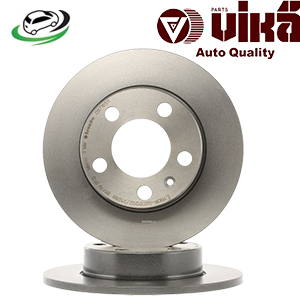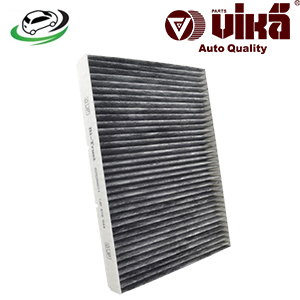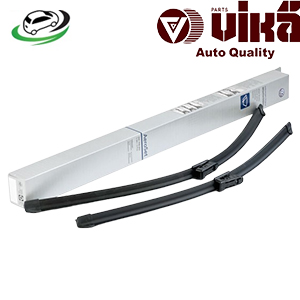-16%
Get Front Wiper Blade Set VW Golf MK7 – Golf R/Golf GTD/Golf TSI & TDI Models/Golf GTI / Clubsport 5G2998002A
Wiper blades are essential components of a vehicle’s windshield wiper system, designed to keep the windshield clear of rain, snow, and debris. They play a crucial role in maintaining visibility and ensuring safe driving conditions in adverse weather. This comprehensive guide explores the design, function, types, benefits, maintenance, and replacement of wiper blades.
Design and Function
Design:
A typical wiper blade consists of several key components:
- Rubber Blade: The part that makes contact with the windshield and removes water and debris. It is made of durable, flexible rubber or a rubber-like material to ensure efficient wiping.
- Frame: The supporting structure that holds the rubber blade. It is usually made of metal or plastic and provides the necessary support and shape to the blade.
- Pivot Arm: The arm that connects the wiper blade to the vehicle’s wiper motor. It allows the blade to move across the windshield.
- Connector: The mechanism that attaches the wiper blade to the pivot arm. Connectors vary in design depending on the vehicle make and model.
- Spring Mechanism: Ensures that the blade maintains consistent pressure against the windshield for effective cleaning.
Function:
The primary functions of wiper blades are:
- Clearing Water: Removes rainwater from the windshield to maintain visibility during wet conditions.
- Removing Debris: Clears away dirt, leaves, and other debris that may obstruct the driver’s view.
- Enhancing Safety: Ensures a clear view of the road and surroundings, reducing the risk of accidents due to poor visibility.
Types of Wiper Blades
1. Conventional Wiper Blades:
- Description: These are the traditional wiper blades with a metal or plastic frame and a rubber blade.
- Advantages: Cost-effective and widely available. Suitable for many standard vehicles.
2. Beam Wiper Blades:
- Description: Feature a single, continuous rubber blade with a flexible design that conforms to the windshield’s shape. They have no external frame.
- Advantages: Provide a more even wipe and better performance in adverse weather conditions. Less likely to freeze or clog with ice.
3. Hybrid Wiper Blades:
- Description: Combine elements of conventional and beam blades. They have a sleek aerodynamic design with an external frame and a rubber blade.
- Advantages: Offer the benefits of both conventional and beam blades, including improved performance and reduced noise.
4. Winter Wiper Blades:
- Description: Designed specifically for cold weather, with a rubber cover that prevents snow and ice from clogging the blade.
- Advantages: Enhance performance in snowy or icy conditions, reducing the risk of blade freezing or clogging.
5. Spoiler Wiper Blades:
- Description: Equipped with an aerodynamic spoiler that helps to press the blade firmly against the windshield at high speeds.
- Advantages: Provide improved wiping performance at highway speeds and reduce wind lift.
Applications
1. Automotive:
- Front Windshield: Wiper blades are most commonly used on the front windshield to clear rain, snow, and debris.
- Rear Windshield: Many vehicles, especially SUVs and hatchbacks, have rear wiper blades for the back windshield.
2. Industrial and Commercial Vehicles:
- Construction Equipment: Used on excavators, bulldozers, and other machinery to maintain visibility.
- Trucks and Buses: Ensure clear visibility for drivers, especially in adverse weather conditions.
3. Household and Recreational:
- Boats and RVs: Wiper blades are used on boat windshields and RV windows to provide clear visibility while traveling.
Benefits
1. Enhanced Visibility:
- Clear View: Ensures a clear view of the road or surroundings, which is crucial for safe driving and operation in adverse weather conditions.
2. Improved Safety:
- Reduced Accidents: Helps to prevent accidents caused by reduced visibility due to rain, snow, or debris on the windshield.
3. Weather Adaptability:
- Performance in Different Conditions: Different types of wiper blades are designed to perform effectively in various weather conditions, including rain, snow, and ice.
4. Maintenance of Vehicle:
- Prevents Windshield Damage: Keeps the windshield clean and free from debris that could cause scratches or damage over time.
Maintenance and Troubleshooting
1. Regular Inspection:
- Check for Wear and Tear: Inspect wiper blades for signs of damage, such as cracks, tears, or wear on the rubber. Look for streaks or missed spots during operation.
- Test Performance: Ensure that the blades effectively clear the windshield without leaving streaks or gaps. Uneven wiping or squeaking noises may indicate the need for replacement.
2. Cleaning:
- Wiper Blades: Clean the rubber blade and the windshield with a mild detergent and water to remove dirt and debris. This helps maintain optimal performance and extends the lifespan of the blades.
- Windshield: Keep the windshield clean and free from debris to reduce the strain on the wiper blades and improve their effectiveness.
3. Replacement:
- Signs of Failure: Replace wiper blades if they are damaged, worn out, or if they no longer perform effectively. Common signs of failure include streaking, smearing, or chattering noises.
- Procedure: Replacing wiper blades typically involves removing the old blades from the wiper arm and installing new ones. Ensure that the new blades are compatible with the vehicle’s make and model.
Seasonal Considerations
1. Winter:
- Use Winter Wiper Blades: Consider using winter wiper blades or blades with a rubber cover to prevent ice and snow buildup.
- Prevention: Remove snow and ice from the windshield before using the wipers to avoid damaging the blades.
2. Summer:
- Regular Replacement: Inspect and replace wiper blades as needed to ensure they remain effective in removing dust, pollen, and rain.
Follow us on Facebook for more parts.



